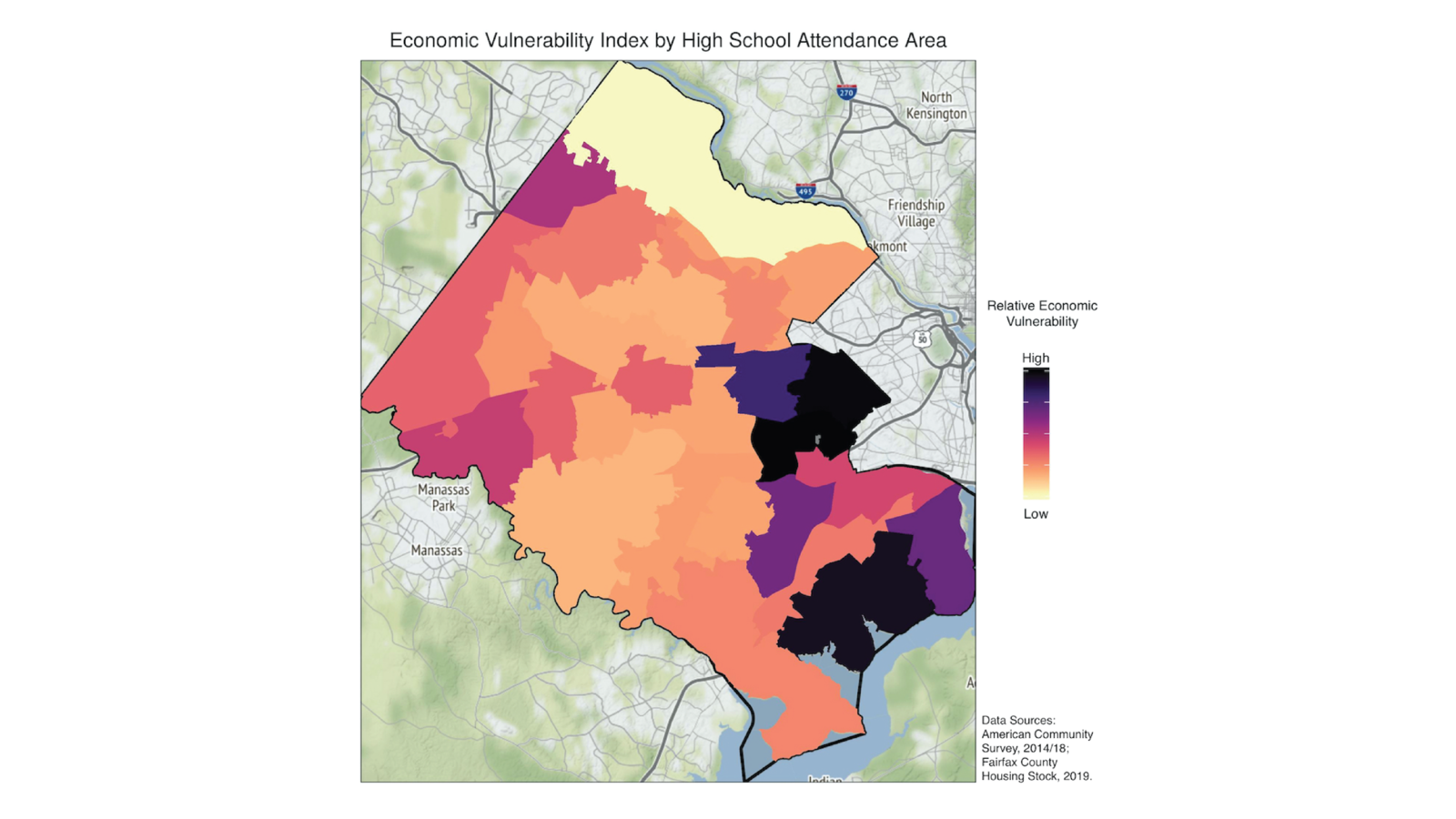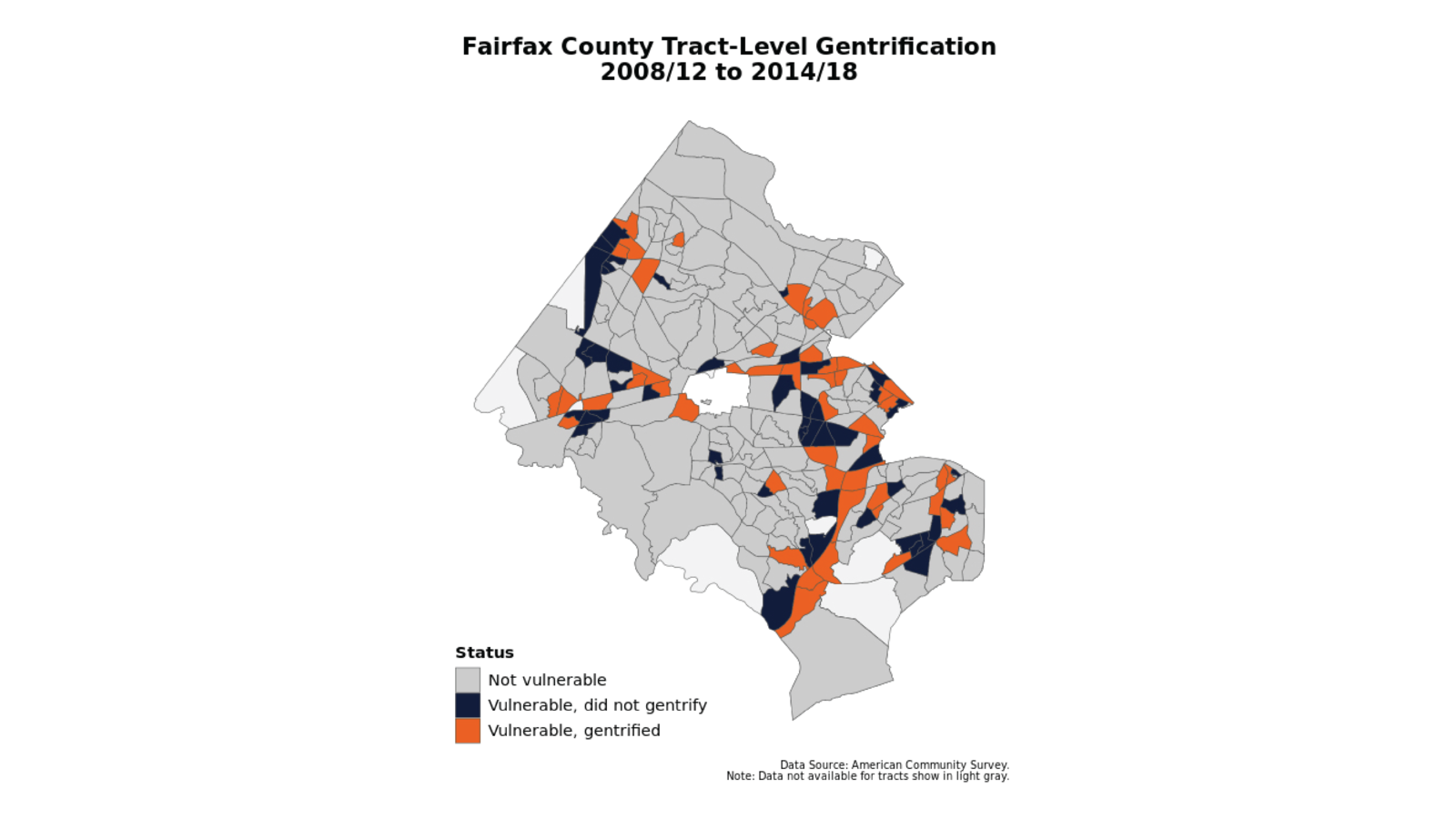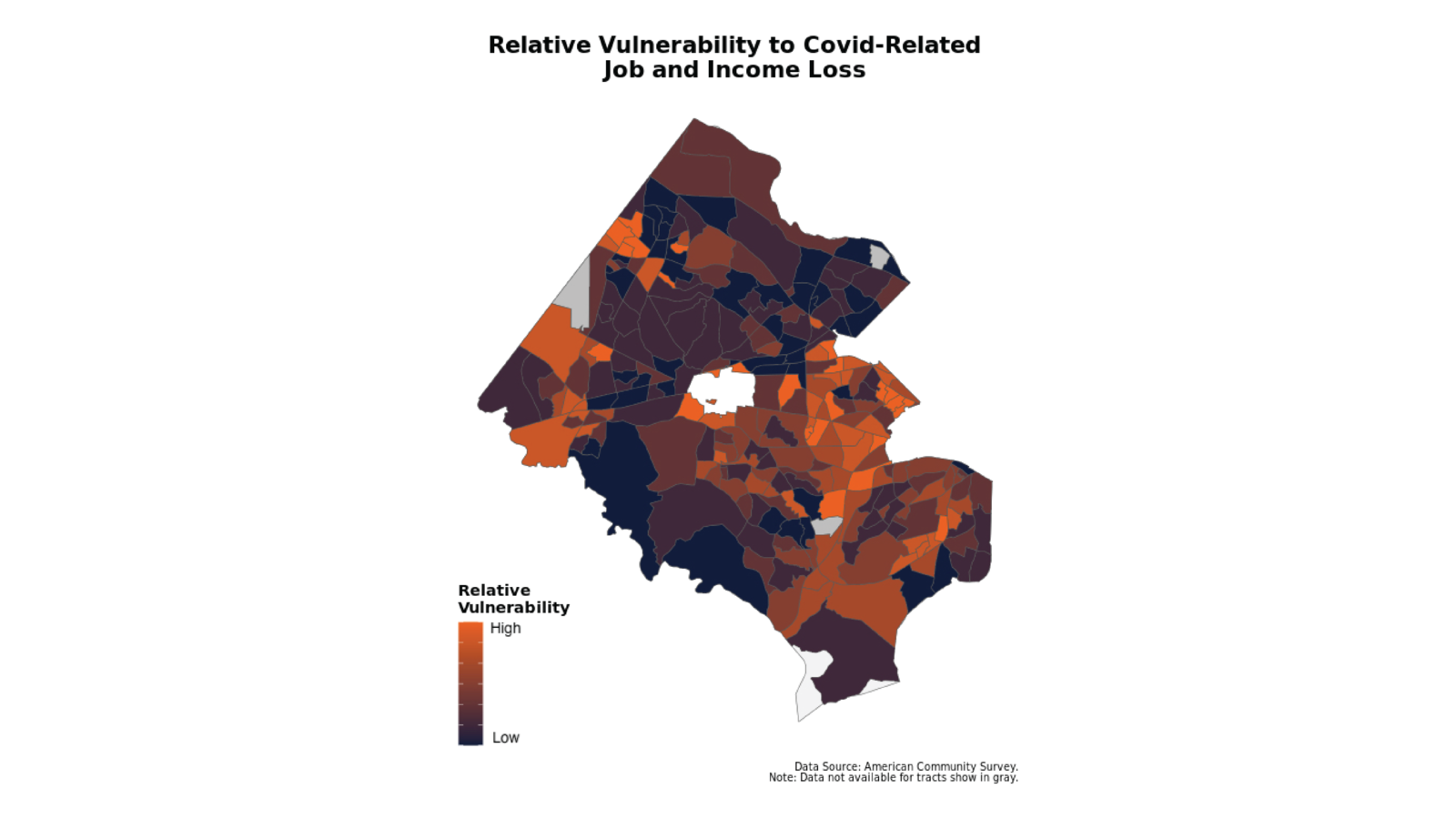We worked closely with Fairfax County Government and Economic Development Authority in developing research questions, identifying relevant data sources, and conducting our analyses. Our collaboration helps county officials consider the equity of all residents in creating new programs and policies for employment support, housing, and transportation.
Mapping Economic Vulnerability
Our collaboration first explored neighborhood economic vulnerability. We developed a synthetic population dataset to examine disparities among geographical units that matter to decision-makers, rather than using administrative groupings. We constructed a composite index summarizing resident sociodemographic and socioeconomic characteristics, and mapped disadvantaged high school attendance areas and supervisor districts. Our maps helped Fairfax County identify areas that could benefit from targeted programs addressing economic vulnerability.
Predicting Gentrification
The second stage of our partnership investigated neighborhood change in Fairfax County. We used population and housing change indicators to highlight county census tracts vulnerable to gentrification and developed a spatial model that identified factors associated with neighborhood change. We tested the effects of a hypothetical housing intervention, showing a reduction in the number of potentially gentrified areas. Our initial predictions provided insights on how policy changes could affect the county before implementation, informing county efforts to improve neighborhood outcomes and allow residents to remain in their homes.
Tracing Job Flows
In light of the global pandemic, we worked together with the county’s Economic Development Authority to characterize local labor markets and provide insights that could guide economic recovery. We developed a summary index that highlighted areas with workers at high risk for pandemic-related job and income loss. We also used network analysis to explore commute flows and identify where employees may have difficulties returning to offices given public transit shutdowns.
Figures



Figure 1. Fairfax County economic vulnerability by high school attendance area. Darker colors indicate areas with higher levels of economic vulnerability.
Figure 2. Fairfax County gentrification by census tract. Blue areas indicate tracts that were vulnerable to gentrification at baseline but did not gentrify over time; orange areas highlight tracts that became gentrified.
Figure 3. Relative vulnerability to Covid-related job and income loss in Fairfax County at census tract level. Orange areas exhibit higher relative vulnerability.
Our findings on inequalities among workers are helping Fairfax County develop a pandemic response in a way that considers all residents’ economic well-being and supports the county’s One Fairfax Equity Policy.
Explore the county through our Fairfax County Labor Market site. This economic mobility interactive tool includes:
- Fairfax County Labor Market Characteristics
- Fairfax County Workforce Characteristics
- Fairfax County Residents' Employment Characteristics
- Areas Vulnerable to Covid-Related Income and Job Loss
- Emerging Employment Areas in Fairfax County
- Using Network Analysis to Study Fairfax County Job Flows
- Examining Employee Flows Into Fairfax County
View maps of economic vulnerability at census tract, high school attendance area, and supervisor district on our poster.


